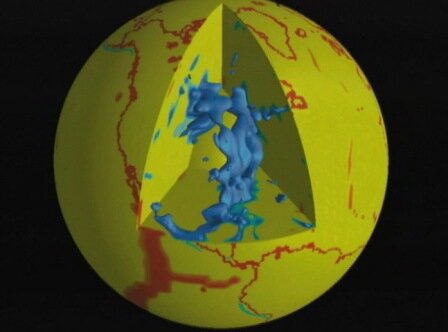One of these following facts about tectonic plates might give you much information about the plate itself. Tectonic plates is a scientific theory that describes the large-scale motion of Earth’s lifthosphere. The model builds on the concept of continental drift which was developed during the first few decades of the 20th century. The geoscientific community accepted the theory after the concepts of seafloor spreading were developed in the late 1950s and early 1960s. On Earth, there are seven or eight major plates (depending on how they are defined) and many minor plates. Where plates meet, their relative motion determines the type of boundary; convergent, divergent, or transform. To get to know more about the plate, here are some other facts about tectonic plates you might be interested in.
Facts about tectonic plates 1: Tectonic Plates
Tectonic plates are composed of oceanic lithosphere and thicker continental lithosphere, each topped by its own kind of crust. Along convergent boundaries, subduction carries plates into the mantle; the material lost is roughly balanced by the formation of new (oceanic) crust along divergent margins by seafloor spreading. In this way, the total surface of the globe remains the same.
Facts about tectonic plates 2: Move
Tectonic plates are able to move because the Earth’s lithosphere has a higher strength than the underlying asthnosphere. Lateral density variations in the mantle result in convection.
Facts about tectonic plates 3: Plate Movement
Plate movement is thought to be driven by a combination of the motion of the seafloor away from the spreading ridge (due to variations in topography and density of the crust, which result in differences in gravitational forces) and drag, downward suction, at the subduction zones.
Facts about tectonic plates 4: Key Principle of Tectonic Plate
The outer layers of the Earth are divided into the litosphere and asthenosphere. This is based on differences in mechanical properties and in the method for the transfer of heat. Mechanically, the lithosphere is cooler and more rigid, while the asthenosphere is hotter and flows more easily. In terms of heat transfer, the lithosphere loses heat by conduction, whereas the asthenosphere also transfers heat by convection and has a nearly adiabatic temperature gradient.
Facts about tectonic plates 5: Types of Boundaries
Three types of plate boundaries exist,with a fourth, mixed type, characterized by the way the plates move relative to each other. They are associated with different types of surface phenomena. The different types of plate boundaries are: transform boundaries, divergent boundaries and convergent boundaries.
Facts about tectonic plates 6: Plate Motion
Plate tectonics is basically a kinematic phenomenon. Scientists agree on the observation and deduction that the plates have moved with respect to one another but continue to debate as to how and when. A major question remains as to what geodynamic mechanism motors plate movement. Here, science diverges in different theories.
Facts about tectonic plates 7: Continental Drift
In the late 19th and early 20th centuries, geologists assumed that the Earth’s major features were fixed, and that most geologic features such as basin development and mountain ranges could be explained by vertical crustal movement, described in what is called the geosynclinal theory. Generally, this was placed in the context of a contracting planet Earth due to heat loss in the course of a relatively short geological time.
Facts about tectonic plates 8: Implications for Biogeography
Continental drift theory helps biogeographers to explain the disjunct biogeographic distribution of present day life found on different continents but having similar ancestors. In particular, it explains the Gondwanan distribution of ratites and the Antarctic flora.
Facts about tectonic plates 9: Plate Reconstruction
Reconstruction is used to establish past (and future) plate configurations, helping determine the shape and make-up of ancient supercontinents and providing a basis for paleogeography.
Facts about tectonic plates 10: Current Plates
Depending on how they are defined, there are usually seven or eight “major” plates: African, Antarctic, Eurasian, North American, South American, Pacific, and Indo-Australian. The latter is sometimes subdivided into the Indian and Australian plates.
Hope you would find those tectonic plates facts really interesting and useful for you to read.










 www.PortlandPayday.Loans
www.PortlandPayday.Loans